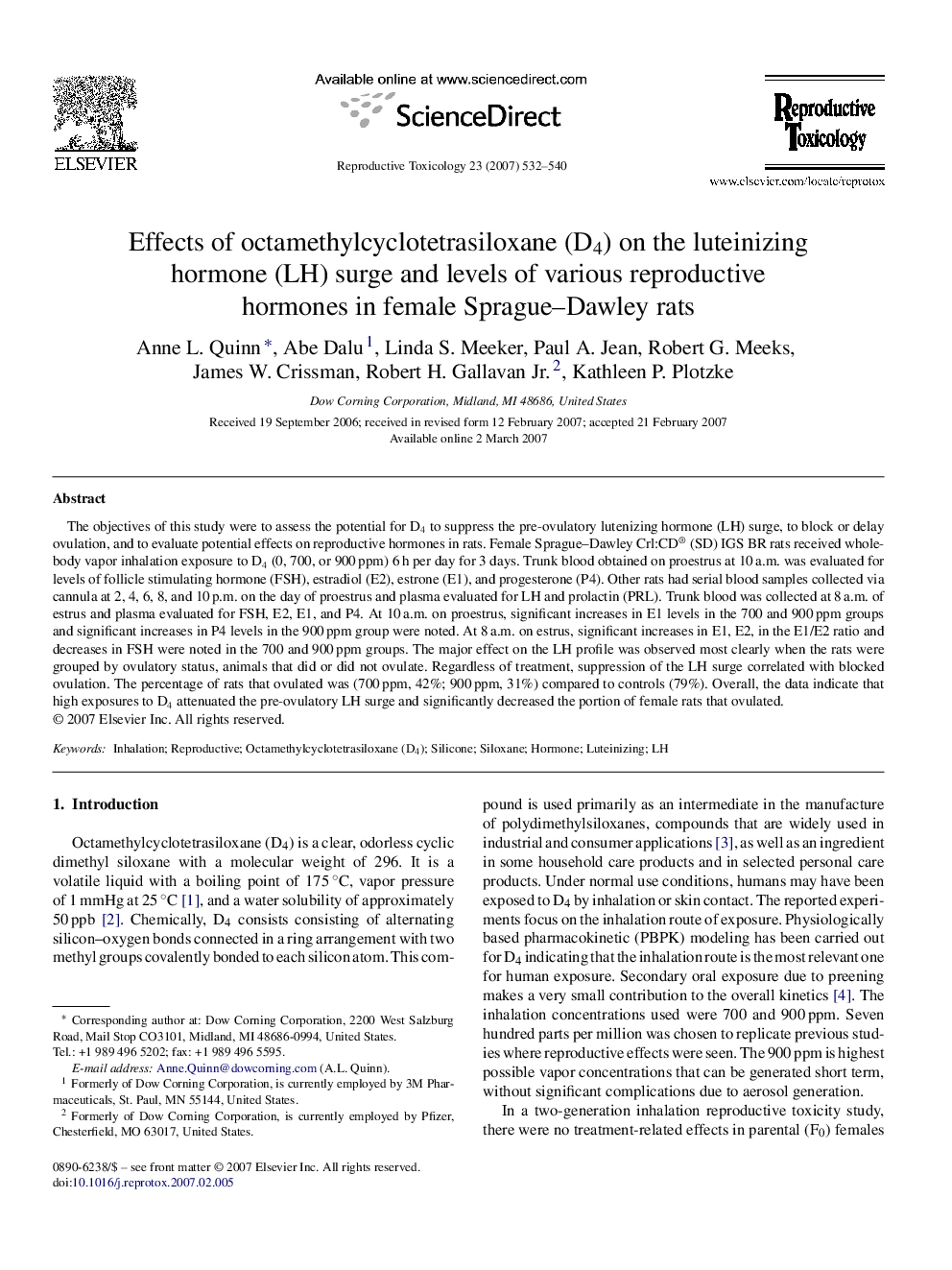| Article ID | Journal | Published Year | Pages | File Type |
|---|---|---|---|---|
| 2594578 | Reproductive Toxicology | 2007 | 9 Pages |
The objectives of this study were to assess the potential for D4 to suppress the pre-ovulatory lutenizing hormone (LH) surge, to block or delay ovulation, and to evaluate potential effects on reproductive hormones in rats. Female Sprague–Dawley Crl:CD® (SD) IGS BR rats received whole-body vapor inhalation exposure to D4 (0, 700, or 900 ppm) 6 h per day for 3 days. Trunk blood obtained on proestrus at 10 a.m. was evaluated for levels of follicle stimulating hormone (FSH), estradiol (E2), estrone (E1), and progesterone (P4). Other rats had serial blood samples collected via cannula at 2, 4, 6, 8, and 10 p.m. on the day of proestrus and plasma evaluated for LH and prolactin (PRL). Trunk blood was collected at 8 a.m. of estrus and plasma evaluated for FSH, E2, E1, and P4. At 10 a.m. on proestrus, significant increases in E1 levels in the 700 and 900 ppm groups and significant increases in P4 levels in the 900 ppm group were noted. At 8 a.m. on estrus, significant increases in E1, E2, in the E1/E2 ratio and decreases in FSH were noted in the 700 and 900 ppm groups. The major effect on the LH profile was observed most clearly when the rats were grouped by ovulatory status, animals that did or did not ovulate. Regardless of treatment, suppression of the LH surge correlated with blocked ovulation. The percentage of rats that ovulated was (700 ppm, 42%; 900 ppm, 31%) compared to controls (79%). Overall, the data indicate that high exposures to D4 attenuated the pre-ovulatory LH surge and significantly decreased the portion of female rats that ovulated.
